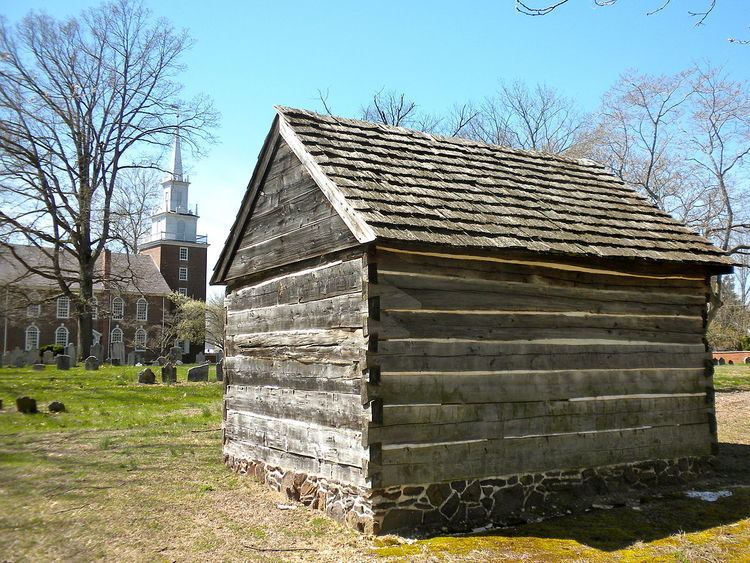 | ||
The New Sweden Farmstead Museum is an open-air museum in Bridgeton, New Jersey, United States. The museum is a recreation of a 17th-century Swedish farmstead located in City Park and is a historical remembrance of the history of the Swedish and Finnish people in early America who first arrived as part of the colony of New Sweden. Originally opened in 1988, it operated a living museum for many years. As funding and attendance declined, the log buildings at the complex fell into disrepair, requiring it to close. Since 2011 fundraising and restoration efforts have allowed it partially re-open.
Contents
New Sweden
In 1638, Swedes and Finns arrived in the Delaware Valley on the ships the Kalmar Nyckel and Fogel Grip to found the colony of New Sweden. Tradition holds that a settlement was first planted by a Finns in and around Finns Point almost immediately. among them, the family of Anders Sinicka, whose surname has many variations. In 1643 they built Fort Nya Elfsborg near Salem. Spreading across South Jersey into what is now Salem, Cumberland, and Gloucetser they built farming communities along its rivers and streams. Eric Pålsson Mullica was an early settler remembered in many regional placenames. By 1649 villages at Sveaborg, now Swedesboro, and Nya Stockholm, today's Bridgeport, where established. It has been suggested that the presence of Forest Finns was influential in the development of log building in the USA.
There are several original structures in the region from the era which are among some of the oldest buildings in New Jersey and some of the oldest non-Spanish built in the United States. Among them are the Caesar Hoskins Log Cabin, the C. A. Nothnagle Log House, the Schorn Log Cabin {originally located on Raccoon Creek and moved to Old Swedes Church in Swedesboro), the Swedish Granary and the Swedish Cabin at Hancock House
Construction and opening
The New Sweden Company, Incorporated was established in 1983 with the mission recreate a village to commemorate the 350th anniversary of the arrival of the European colonists. The project was originally intended to be built in Salem but after some controversy it was decided the locate it in Bridgeton.
The museum was built in 1987. A team of experts associated with the Riksförbundet för Hembygdvärd (National Association for Homestead Care) from Sweden supervised the construction at the site of the log structures using traditional materials and methods to replicate a 17th-century farmstead, or gård. It comprises a farmhouse, a blacksmith shop, a storehouse, a Granary (threshing barn]], a stable a barn with outhouse, a sauna and a Smokehouse. Furnaces, chimneys, and fireplaces are also authentically constructed. The collection includes furnishings, farm equipment, and other artifacts genuinely of Swedish-Finnish origin which have been inventoried and move from temporary to climate controlled storage.
The museum was formally opened on April 14, 1988 by Carl XVI Gustaf and Queen Silvia of Sweden accompanied by Governor of New Jersey Thomas Kean and his wife Deborah. The royal family donated candleholders to the museum.
Fundraising and restoration
The museum is operated under the auspices of the New Sweden Colonial Homestead Foundation which is fundraising restore and re-open the museum. The elements have taken their toll on the buildings. As 2011 it was estimated that $10,000 per structure was needed for roof repairs.
In September 2011, fundraising reception was attended by the Swedish Ambassador to the United States, Jonas Hafström to draw attention to the foundation's efforts.
Various fundraising activities at the farmstead have been done in collaboration with summer youth programs. The homestead has received grants from Cumberland County and Swedish Council of America, among others. In 2012 the foundation received $10,000 donation from owners of Bridgeton-based Whibco.
The Swedish Colonial Society has been enlisted to help with restoration efforts.
